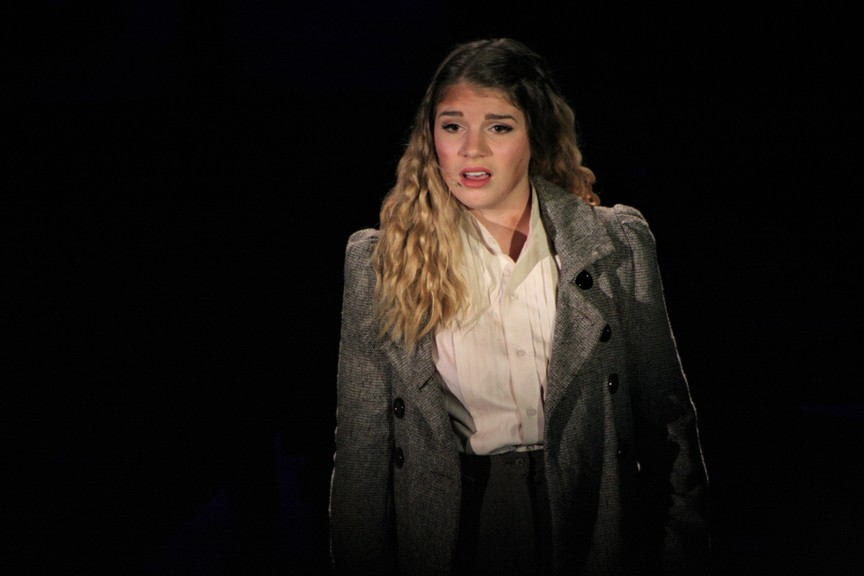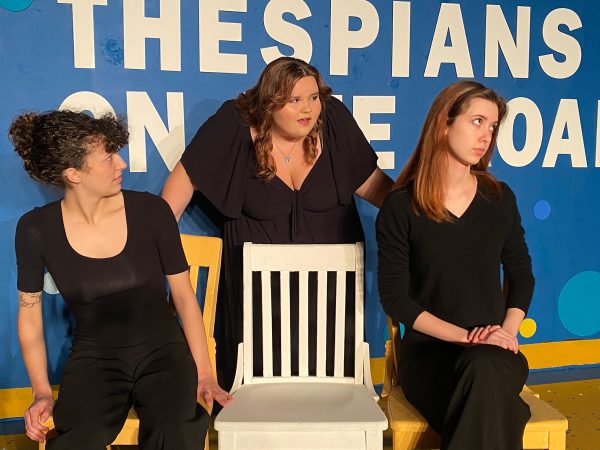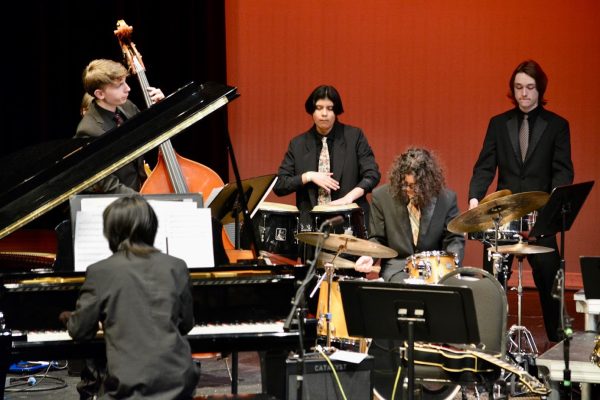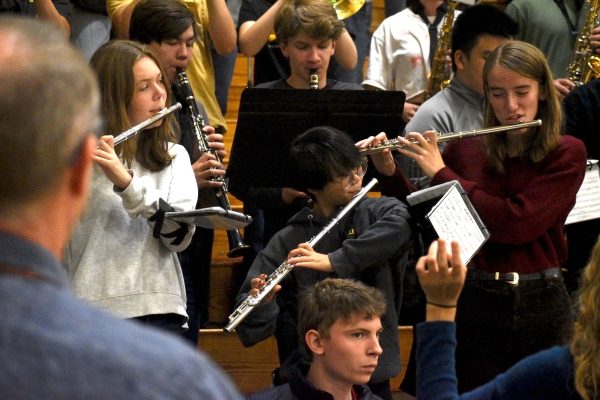‘Les Miserables’: Better than the movie
The drama department took on a huge challenge producing “Les Miserables,” and I applaud all 100 members of the cast and crew who worked last summer and during the school year. For many of them, this is their last year at Cleveland — and what a play to end their high school acting experience. The play, which ran Nov. 17-20, attracted packed houses, and some are calling it one of Cleveland’s best productions ever.
“Les Miserables” is a play that few high schools have tackled, and for good reason. The high school version runs about two and a half hours, with the original lasting a little more than three. If you need an example of how hard these students worked, keep in mind that this is a musical; the orchestra, made up of students and adults, was nearly always playing, and the actors were constantly singing to tell the story of Jean Valjean (Kaya Hellman), the unlucky convict redeemed through his good works and belief in God in a turbulent post-Napoleonic France.
The cast worked tirelessly in this play’s preparation and production. From the children who played iconic roles such as Gavroche (Dylan Beckett), Cosette (Morgan Demetre), and Eponine (Nico Hellman), to every student who was a part of the cast, “Les Miserables” was a masterpiece.
The cast made the play come alive with sound effects through the meager means the school has provided; the noises created in the battle were probably the most cost effective things I have ever seen. Backstage hands operated a contraption they built from two large pieces of wood that were slapped together at the perfect time to mimic gunfire or cannons.
The scene that stood out the most for me has to be when Eponine was dying and sang her last song. Hellman’s heartbroken character was spot on: In that scene, Eponine’s pain was tangible. Nor can we forget the only time we saw the Bishop (William Balmer) when he sang his song to not only forgive Valjean’s theft of candlesticks but give them to him; the whole level of the play changed. Balmer took the expectations of the play and raised them to a level that no other high school play could have reached.
On that note, the songs were by far one of the best parts of the play. The cast perfectly executed unforgettable pieces such as “At the End of the Day,” “I Dreamed a Dream,” and one of the best, “Do You Hear the People Sing?” led by the incomparable revolutionary Enjolras (Max Friedenwald-Fishman). And we cannot dismiss the solos by Jean Valjean (Kaya Hellman), “Who Am I?” and Javert (Sawyer Jackson) singing “Stars.”
Tom Beckett, director of the drama department, must have had incredible faith in his students to even begin to take on a play such as “Les Miserables.” Between the actors, stage, and orchestra, everything needed for this play was a challenge to take on, yet Beckett seemed to flourish in the difficult task he set up for himself. Few high schools have put this play on, and that makes sense, seeing that every part of this play was difficult for the director and actors. To have to cast such diverse characters for this play, Beckett had to have immense trust that whatever student he cast would make the role their own. Truly, Beckett is at the heart and soul of this play–he put his all into this production.
Although every main actor had his or her moments, the secondary actors need to be publicly applauded. Starting with the Bishop of Digne, Balmer captured the audience with his song and brought the first act to a whole new level. Also, who could forget the innkeeper Thenardier (Duncan Kass) and his wife Madame Thenardier (Tirzah Joy Hanewall)? Those two brought the comedic parts to life and had wonderful expressions that were changing the whole time. And the child actors? To be as young as the child actors were in this play and to have that much talent is mind-blowing. What a future ahead of them. I mean Gavroche, Beckett’s son, had an immensely difficult role, yet he acted it out flawlessly. I think that the characters who gave more depth to the play did a huge part in making the play succeed.
Now, onto the part of the review that is hard to write–the critique. I think that for the resources we have at Cleveland, “Les Miserables” knocked the socks off the audience. The set was superb and professional looking and functional. However, you can always find faults, even in a great work. The microphones sometimes would cut out and no one could hear what was happening, especially on the first night of the play. I was in the second row, but there were times when it was difficult to hear the actors’ voices. Finally, I think there were some difficult scenes to interpret if you had not either seen the movie or read the book. That being said, I don’t think that the few bits and pieces that went wrong took anything away from the play and didn’t change how the audience felt about any of the scenes from the play.
I want to give a shout out to the members of the orchestra (directed by Paula Creamer) for putting so much time into perfecting the soundtrack for this play. Y’all rock and I could tangibly hear the time put into this production. Without the orchestra, I don’t think that this play could have even happened.
Furthermore, the crew worked so hard on the lighting and the sound that in a couple parts of “Les Miserables,” the lighting changes were the star of the show. The color changes and the effects must have taken so much time to get together and fix and prevent all the possible mishaps.
All in all, “Les Miserables” may go down as one of the greatest plays to ever come from the Cleveland theater and drama department.

Position within Newspaper: Assistant Social Media Editor and Page Editor
Graduation year: 2018
Favorite thing to do: Sleep
Favorite book: The...

Position: Editor-in-Chief, Online Editor, Page Editor, Photographer, Videographer
Graduation year: Class of 2017
Favorite thing to do: Hang out with...


















